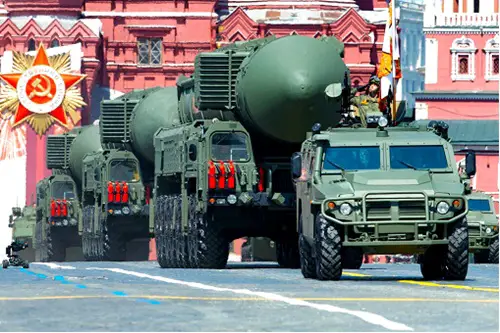|
TRANSLATE THIS ARTICLE
Integral World: Exploring Theories of Everything
An independent forum for a critical discussion of the integral philosophy of Ken Wilber
 Ray Harris is a frequent contributor to this website. He has written articles on 9/11, boomeritis, the Iraq war and Third Way politics. Since 2007 he took to writing his novels Navaratri, Wild Child and Eden. Harris lives in Ballarat, Victoria, Australia. Ray Harris is a frequent contributor to this website. He has written articles on 9/11, boomeritis, the Iraq war and Third Way politics. Since 2007 he took to writing his novels Navaratri, Wild Child and Eden. Harris lives in Ballarat, Victoria, Australia.Against Political ViolenceRay Harris
“I object to violence because when it appears to do good, the good is only temporary; the evil it does is permanent.” Gandhi A Naive YouthThe year is 1975 and I'm on the cusp of turning 20. A group of friends, university students mostly, have purchased land in the mountain district of Victoria with the intention of establishing an anarcho-communist commune called the Black Rose Cooperative. We joke about how suitable the land would be as a mountain retreat during the 'revolution' and we pose for this group photo (I'm in the check shirt). Although some of us are a little more serious. Phil talks about travelling to South America to join a guerrilla group (the Sandinistas I seem to recall) and later that year we host a Zimbabwean student whose brother is fighting in one of the rival liberation groups, either the Zimbabwean National Liberation Army (ZANLA) or the Zimbabwean People's Revolutionary Army (ZIPRA). It's the closest a bunch of privileged, middle-class students will ever get to a real revolutionary. 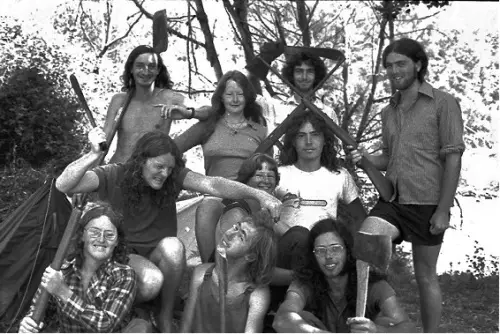 Talk of 'the revolution' is common amongst the left in 1975. We are all fully aware of the factional rivalries and ideological posturing of the international left—the Trots, the Maoists, the Marxist-Leninists and the Anarchists. The Red Army Faction (Baader-Meinhoff Gang) is active in Germany. The Symbionese Liberation Army and Patti Hearst have made the headlines. Ireland is experiencing 'the troubles', the PLO is hijacking planes, the Vietnam war is still raging and 'liberation' armies have popped up everywhere. The great enemy is US-imperialism. But the revolution never happens. News begins to filter out about the atrocities committed by the various liberation groups in the name of saving the people. Mao dies in 1976 and we steadily learn about the atrocities committed during The Great Leap Forward and The Cultural Revolution. More is revealed about Stalin and his betrayal of the first socialist revolution. The first reports of atrocities in Cambodia under Pol Pot begin to emerge. And as the Vietnam War comes to a close, we learn that it was not just US soldiers who had committed atrocities such as My Lai, but also the Viet Cong: at Dak Son in 67, Hue in 68, Son Tra in 68 and Thanh My in 70. (1) This caused a major shift in the left. The idea of violent revolution became an embarrassment. This didn't mean we abandoned progressive politics. Everyone in the photo continued to fight for change. Adam came out of the closet and become active in the Gay rights movement. Andrew went to New Guinea to work with tribal groups. Noni became an activist in the union movement, Noreen taught feminist sociology at university, others became doctors and teachers. I became a hippie and eventually a filmmaker. Violence is CounterproductiveViolent revolutions follow a pattern. After the initial success at overthrowing the old order, the new order shatters into factions and starts turning on their own and the people they were supposed to liberate. The first clear example was the descent of the French Revolution into the Reign of Terror, symbolised by the infamous guillotine. Violence reduces people to their base level. The French Revolution inspired the first successful slave rebellion in the French colony of Haiti. The Republic ended slavery. This ought to be celebrated, except that the rebellion led to an orgy of revenge culminating in the massacre of between 3—5,000 French, including women and children (2). It has been called a genocide and it was as brutal as all genocides are, with sexual violence, torture and mutilation. 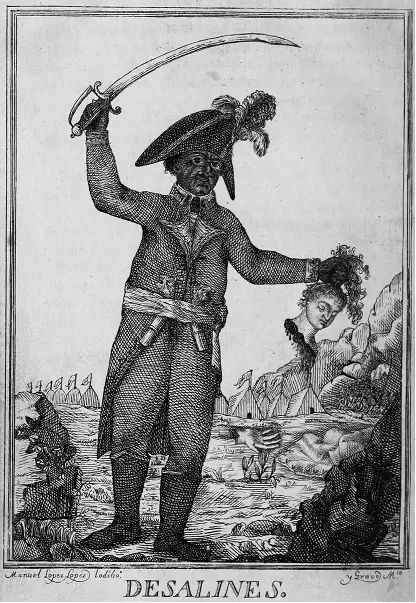 Violence incites hatred and leads to cycles of retribution. Blood lust. The root cause of most current conflicts can be found in long standing historical grievances and hatred. Take your pick. The Bosnian war of 1992-95 between Muslim Bosnians, Orthodox Serbs and Catholic Croats stems from the Ottoman conquest of the Balkans in 1384 and the subsequent wave of wars of independence in the late 19th century. The attacks and massacres against the Rohingya in Myanmar stem from attacks against the Rakhine Buddhists immediately after WW2 during an attempt to establish a seperate Muslim state. This conflict saw tit for tat ethnic cleansing of villages. In 2017 Rohingya militants massacred the Hindu inhabitants of Kha Maung Seik. In 2016 the government engaged in the systematic persecution of Rohingya. The long standing communal violence between Irish Catholics and Loyalist Protestants with the citizens caught between rival paramilitary acts of retaliation in which 186 children were killed . In 1994 the Chechen Republic of Ichkeria attempted to secede from the Russian Federation, leading to the brutal conflict of the First and Second Chechen wars. This conflict has its origins in the Caucasian War of 1817-64 in which the Russian Empire colonised former Persian lands—as well as subsequent persecutions, including the ethnic cleansing of around 500,000 Chechens deported to Siberia and Central Asia in 1944 (3). The recent massacre of over 130 Russian civilians by ISIS-K is in retaliation for these and other historical grievances. Some of these historical grievances go back millennia and are deeply embedded in the cultural memory of various ethnic and religious groups. The most obvious example is that of Judaism and the theme of exile and return marked during Passover, Hanukkah, Purim and Tisha B'av. Christian and Islamic antisemitism is based on ancient resentments that the Jews were Christ killers and betrayed Mohammed in Medina. In India, Shiv Sena, an ultranationalist Hindu movement, take their name from Shivaji, the 17th century Marathi ruler who challenged the Mughals. Shiv Sena militants have been implicated in causing the Mumbai riots of 1991-2 in which over 500 Muslims were killed. But this is just one instance of a continual cycle of communal violence between Hindus and Muslims that stem from resentments due to Mughal colonisation. And what happened to the Zimbabwean student? After independence, the two rival factions turned on each other. This was partly due to ethnic rivalry with Mugabe's ZANU (ZANLA) party representing the Shona and the opposition ZAPU (ZIPRA) representing the Ndebele. Under Mugabe's order the 5th Brigade (trained by Nth Korea) of the new Zimbabwean National Army attacked the Ndebele under accusations of insurrection. These massacres were called the Gukurahundi and resulted in an estimated 20,000 deaths (these figures are always disputed). (4) And as we know, Mugabe, following the pattern, governed as a tyrant until the coup of 2017. 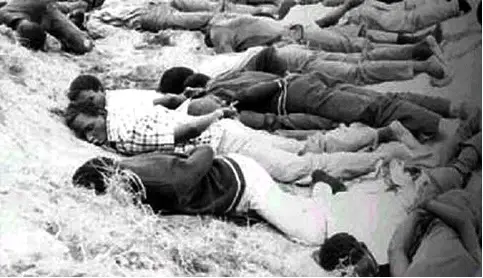 This is by no means an extensive list. Each nation has its culture shaping history of wars, insurrections and political violence. I live in Ballarat, Victoria, the home of the Eureka Stockade, a miner's rebellion that has shaped the Australian identity. It has its deeper roots in the conflict with the Irish and English, a conflict transported to Australia. Triumph or TraumaThe Romans loved a 'triumph'—a parade to celebrate a military victory. It was pure propaganda to turn the public's minds away from the terror and trauma of war. The glorification of sacrifice is meant to distract our thoughts away from the brute destruction of lives and livelihoods and the breaking of bodies and souls. We are supposed to feel pride, not horror and disgust. Is there any more obscene example than the boastful display of military power?
During early wars, soldiers who displayed the effects of 'shell shock' were considered weak and so were despised. Those who returned with disabling injuries faced a life of rejection and poverty, hidden away out of shame. The war machine only wants heroes. We now know a great deal more about the devastating impact of post-traumatic stress disorder. Many countries are now dealing with a high rate of suicide amongst veterans, some of who did not experience direct combat. In the US one report stated that 22 veterans per day were suiciding. It is calculated that around four times as many have died by suicide than died in combat. (5) Given these statistics it is clear that Russia faces an enormous impending social problem as a consequence of its war in Ukraine. Whilst Russia seeks to minimise the reported number of casualties, the independent consensus places the figure at between 355,000 to 415,000 to date. This means that Russia can expect the future suicide rate to devastate the survivors. The number of veterans who will suffer the life-long debilitating effects of PTSD and ongoing physical trauma will be much larger. This will have a traumatic impact on Russian families dealing with a traumatised son, father or husband. What then of the impact on Ukraine? So far very few Russian civilians have died in this war compared to an estimated 11,000 Ukrainian civilians. And for what reason? Moral and Legal ResponsibilityJust war theory can be dated as far back as 1000 BCE to the Mahabharata and the chapter known as the Bhagavad Gita. In this chapter Krishna instructs Arjuna on the morality of war and one's duty in a just war. China also developed a theory of just war—yi zhan. Contemporary international law makes the distinction between jus ad bellum and jus in bello—the acceptable reasons for starting a war and appropriate conduct in war (as outlined in the Geneva conventions). At this point it is appropriate to point out the developmental aspect of war and conflict resolution.
I also want to make the distinction between moral and legal responsibility. They are not the same. Whilst legal constraints might arise out of the moral debate, legal constraints are written down and are therefore objective. Issues of moral responsibility are contested and contingent on the level of moral reasoning and ideological prejudice. Much of the current debate over the Ukraine war and the war in Gaza (including on this site) consist of people's moral opinion about the legality of these conflicts. Most of it is uninformed and based on partisan support for just one side of the conflict. A prime example of this has been the debate over the targeting of hospitals in Gaza, with the opinion that Israel has contravened the Geneva conventions. This is the relevant convention in full. (6) 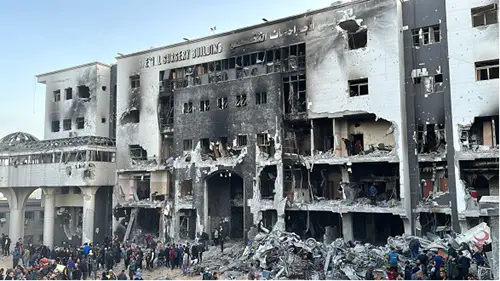
Al-Shifa hospital in Gaza.
“Article 18—Wounded and sick III. Protection of hospitals Note that the convention clearly states 'shall at all times be respected and protected by the Parties to the conflict'. In this case this means both Israel AND Hamas. Also note that the convention clearly states that hospitals should be 'situated as far as possible from such objectives'. This means that under the convention it is illegal for Hamas to situate fighters near hospitals, let alone within hospitals. If one of the parties to the conflict breaks this convention article 19 removes the above protections. “The protection to which civilian hospitals are entitled shall not cease unless they are used to commit, outside their humanitarian duties, acts harmful to the enemy.” Apologetics—one person's terrorist is another's freedom fighterThe term apologetics is commonly used to describe the often elaborate philosophical justifications in support of religious faith. It can also be used to describe those seeking to excuse an ideological belief. In this case the justification of violence in the name of an ideology, whether that is from either the right or left. Perhaps one of the most notorious justifications concerns the alleged righteousness of the cause. It can be summed up in the saying 'one person's terrorist is another's freedom fighter'. Let's be absolutely clear about the definition of terrorism. It is 'the unlawful use of violence and intimidation, especially against civilians, in the pursuit of political aims'. The key phrase here is 'especially against civilians'. International law recognises in principle the right to resist. “In international law, the right to resist is closely related to the principle of self-determination. It is widely recognized that a right to self-determination arises in situations of colonial domination, foreign occupation, and racist regimes that deny a segment of the population political participation. According to international law, states may not use force against the lawful exercise of self-determination, while those seeking self-determination may use military force if there is no other way to achieve their goals. Fayez Sayegh derives a right to resist from the Charter of the United Nations' recognition of an inherent right of national self-defense in the face of aggression. Based on the charter, the 1970 United Nations General Assembly Resolution 2625 explicitly endorsed a right to resist "subjection of peoples to alien subjugation, domination and exploitation".” (7) Many apologists misuse this concept to excuse the actions of militants in the causes they happen to approve of. There is no better example than the struggle of the Palestinian people for self-determination. The website 'Law for Palestine' goes into a detailed examination of the legal rights of Palestinians to resist. In a quick ten point guide, the first point reads. “1. The illegal occupation represents an unlawful use of force (i.e., aggression). As long as the illegal occupation persists, it constitutes, according to international responsibility rules, a continuous wrongful act, thus preserving the continuous right to self-defence for the occupied state/people.” The final point however, provides an important caveat. “10. Finally, it is worth emphasizing that the right to resist and self-defence is subject to the rules of international humanitarian law, including the respect of the principle of distinction between civilians and combatants. So, in short: Right to resist, including armed resistance: Yes. Right to indiscriminately kill or target civilians: No. It's as simple as that.” (8) Yet, despite it being 'as simple as that', apologists continue to excuse violence against civilians. If they support a cause, the terrorist becomes a freedom fighter. Civilians are considered legitimate targets if they are believed to belong to an oppressor group, whether that be defined by class, nationality, religion or race. As Lenin famously said: “Not a single problem of the class struggle has ever been solved in history except by violence. When violence is exercised by the working people, by the mass of exploited against the exploiters—then we are for it!” Next we come to the excuse of asymmetric warfare. Apologists will often justify the use of illegal terrorist tactics because their chosen side does not have access to the same level of weapons as their enemy. This is moral nonsense. As the Vietnam and Afghan wars have clearly shown, the use of guerrilla tactics can defeat a conventional army. But those guerrilla tactics are still subject to international law. The first and necessary step in excusing the traumatising and murder of the enemy group is through the process of dehumanisation. When Putin invaded Ukraine he invoked the Russian fear of Nazis. The invasion was morally justified as a process of 'de-nazification'. When Islamic State attempted genocide on the Yazidi, including enslaving women and children, they justified their actions by labelling the Yazidi as kefir—infidels. It should go without saying that this process of dehumanisation occurs on both sides of a conflict. The more extreme the dehumanisation the greater the potential for committing atrocities. Russian soldiers are given licence to kill Ukrainians because they are Nazis. Ukrainians refer to the Russians as 'Orks'. Hamas are given license to massacre Israelis because they are Zionists, and the IDF kill innocent Gazans because they are all Hamas sympathisers. Outrage is selective. It depends on which side you support. The HypocritesI think there is a special place for those who condemn just one side by selectively quoting international law, or rather, their opinion of what international law states. International law does not take sides. It applies equally to everyone. Earlier I mentioned the outrage over US soldiers committing atrocities against the villagers of My Lai. An appalling crime that shook the world and which lead to the prosecution of 26 soldiers. Australia is currently going through a similar process over allegations of ADF war crimes in Afghanistan. However, there is little outrage and little publicity over similar massacres committed by the Viet Cong against South Vietnamese villagers (or by the Taliban). A good part of the reason for this is the degree of openness and transparency of the responsible governments. The Vietnam War was extensively covered by the Western press in newspapers and most especially, on TV. Certain images are seared into the minds of the Western public. One of the most famous images of war is of a young girl running naked down the road, her back scalded from napalm. It won a Pulitzer Prize and helped turn public opinion. 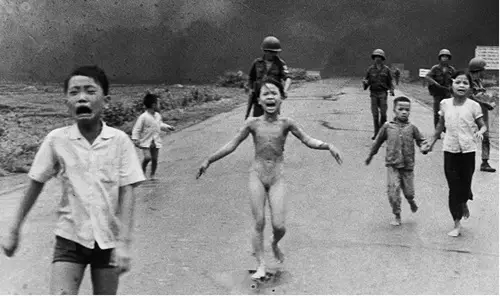 There was no such openness on the North Vietnamese side. No equivalent photos of Viet Cong atrocities. No equivalent public trials of the guilty soldiers. The press was tightly controlled and the North Vietnamese public, unlike the Western public, was kept in the dark. As a consequence atrocities and war crimes committed by the Viet Cong were kept hidden until after the war. What is now clear is that the Viet Cong committed a long list of war crimes, but we only remember US atrocities. The degree of openness of governments has a direct impact on the reporting of war crimes. We know for example, that Putin has cracked down on independent journalism in Russia. Several independent news organisations now operate in exile and some journalists have been killed. According to Reporters Without Borders, Russia ranks 164 out of 180 for press freedom. China is far worse, ranked 179 out of 180, second only to North Korea. (9) What this means is that the Western press has a greater ability to uncover and report on abuses committed by its own troops than is usually the case with its opposite. This leads to an imbalance where the 'West' is seen to commit more war crimes—or for the West to bear the greater responsibility. This is hypocrisy, the application of double standards—of holding the West to a higher standard whilst ignoring the abuses and crimes committed by others. The obvious reason for doing so is crude partisan bias. This was clearly the case during the Vietnam War when the left (including myself) ignored war crimes committed by the Viet Cong (and the Russians and Chinese who provided support) but condemned crimes committed by the South Vietnamese and the US—because, well, US imperialism. The same double standard applies to the condemnation of the US invasion of Iraq and the almost deafening silence in regard to Russian complicity in the war in Syria, despite the similar rate of civilian casualties. So too with the war in Gaza, with condemnation of US support for Israel but silence over Iran and Russia's support of Hamas, Hezbollah and the Houthi. It is especially evident in the constant condemnation of Israel for committing war crimes, whilst ignoring the multiple war crimes committed by Hamas in Gaza. It seems that people have forgotten that Hamas are actively fighting in Gaza and that they are also responsible for civilian deaths as collateral damage (innocent people cannot be caught in crossfire if there is no crossfire). International law does not take sides. ALL war crimes must be investigated and prosecuted. The Downward SpiralViolence has a devolutionary effect. People who live in fear and have been traumatised revert to the lower developmental levels. Prolonged exposure to stress hormones has a measurable deleterious effect on physical and mental wellbeing. One effect is the loss of impulse control. This has a further impact on the sufferer's friends and family, leading to secondary trauma. Rage is the opposite of reason. Hatred the opposite of compassion. War unleashes monsters. Any person or group that initiates a process of dehumanisation and violence will in turn be dehumanised and attacked, creating a cycle of hatred. We know that such mutual dehumanisation can last for many generations, in some cases actually defining a culture. The Palestinian historian (and no friend of Zionism), Rashid Khalid, has clearly stated in his book on the subject, 'Palestinian Identity: The Construction of Modern National Consciousness' that the concept of Palestine came into existence partly as a reaction to Zionism. Prior to the first waves of Jewish migration the local Arabs had multiple identities (including being an Ottoman citizen). “…the Palestinians had not only to fashion and impose their identity and political existence in opposition to a European colonial power, but also to match themselves against the growing and powerful Zionist movement…” (10) As history has shown, the Israel/Palestine conflict has unleashed waves of mutual dehumanisation and violence. One of the first riots was in 1920 (Nebi Musa) when an Arab mob attacked Jews in Jerusalem shouting racist slogans such as 'the Jews are our dogs' (meaning they were subordinate). Jews were also guilty of dehumanising local Arabs, which eventually allowed them to massacre villagers during the 48 War of Independence (the Naqba). Decades of conflict have pulled both societies down to their base levels, so that the extremists on both sides seek the obliteration of the other as the only solution. In the same way, Putin's ultranationalist vision of novorossiya (New Russia) denies the idea of an independent Ukraine. Restorative JusticeAnd yet we know it is possible to break the cycle of mutual hatred and mistrust. Former enemies can reconcile. Japan, Germany and Italy after WW2. The individual states of the former Austro-Hungarian Empire after WW1, some of whom joined the Allied forces in WW2. Perhaps the best example of such reconciliation was the aptly named Truth and Reconciliation Commission instituted in South Africa after the defeat of apartheid. It pioneered the principle of restorative justice, described thus: “…a growing social movement to institutionalize peaceful approaches to harm, problem-solving and violations of legal and human rights. These range from international peacemaking tribunals such as the South Africa Truth and Reconciliation Commission to innovations within the criminal and juvenile justice systems, schools, social services and communities. Rather than privileging the law, professionals and the state, restorative resolutions engage those who are harmed, wrongdoers and their affected communities in search of solutions that promote repair, reconciliation and the rebuilding of relationships. Restorative justice seeks to build partnerships to reestablish mutual responsibility for constructive responses to wrongdoing within our communities. Restorative approaches seek a balanced approach to the needs of the victim, wrongdoer and community through processes that preserve the safety and dignity of all.” A key component of the TRC was its neutrality. “The commission was empowered to grant amnesty to those who committed abuses during the apartheid era, as long as the crimes were politically motivated, proportionate, and there was full disclosure by the person seeking amnesty. To avoid victor's justice, no side was exempt from appearing before the commission. The commission heard reports of human rights violations and considered amnesty applications from all sides, from the apartheid state to the liberation forces, including the African National Congress.” (11) 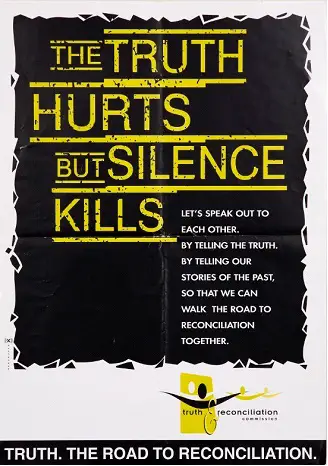 This model has now been used in several conflicts and is certainly a model to aspire to. Yet it has its difficulties. People who are deeply embedded in ideologically motivated narratives based on propaganda have difficulty accepting the truth. We are all familiar with the saying that the first victim in war is the truth. And the process of demonisation necessary to justify violence against a perceived enemy involves spreading lies and negative stereotypes (such as Ukrainians are Nazis or more bizarrely, that Jews are Nazis). Uncovering the truth has become even more difficult with the intentional spread of disinformation through every strata of the media, particularly through allegedly independent outlets feeding off a generalised (and sometimes paranoid) mistrust of the 'mainstream' media. A problem made worse by the misinterpretation of postmodernism and the rise of epistemological relativism. We need disciplined critical thinking more than ever. As the poster correctly points out, 'The Truth Hurts'. Notes1. "Viet Cong and People's Army of Vietnam use of terror in the Vietnam War", en.wikipedia.org 2. "Haitian Revolution", en.wikipedia.org 3. "Deportation of the Chechens and Ingush", en.wikipedia.org 4. "Gukurahundi", en.wikipedia.org 5. "United States military veteran suicide", en.wikipedia.org 6. "Article 18 - Wounded and sick III. Protection of hospitals", ihl-databases.icrc.org 7. "Right to resist", en.wikipedia.org 8. "Do Palestinians have the right to resist, and what are the limits? Short article", law4palestine.org 9. "Press Freedom Index", en.wikipedia.org 10. Rashid Khalidi, Palestinian Identity: The Construction of Modern National Consciousness, Columbia University Press. 1997, Page 20. 11. "Restorative justice", en.wikipedia.org
Comment Form is loading comments...
|
